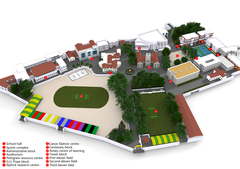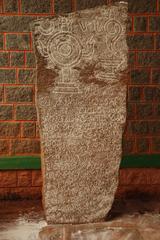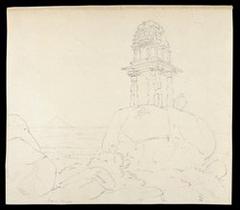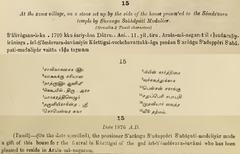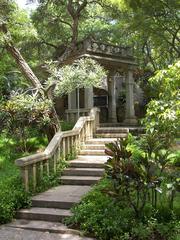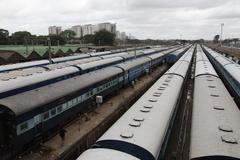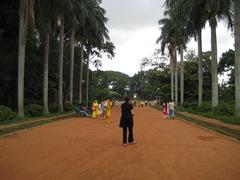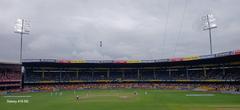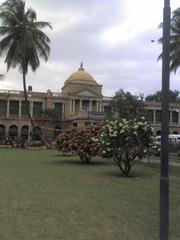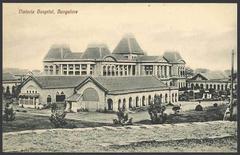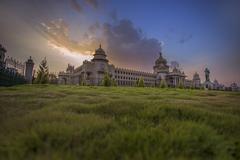Ghati Subramanya Temple: Visiting Hours, Tickets, and Comprehensive Guide
Introduction
Ghati Subramanya Temple, located near Tubagere in Doddaballapura, approximately 60 kilometers northwest of Bengaluru, Karnataka, is a revered Hindu pilgrimage site renowned for its unique dual deity sanctum and centuries-old heritage. The temple’s primary deity is Lord Subramanya (Kartikeya), worshipped alongside Lord Lakshmi Narasimha, an avatar of Vishnu. Its rare back-to-back monolithic idol arrangement, spiritual significance, and vibrant festival celebrations make it a vital destination for devotees and cultural explorers alike (karnataka.com; templeyatri.in).
This guide presents detailed historical and architectural insights, visitor information—including visiting hours and ticket details—festival highlights, accessibility, and practical travel tips to help you plan a meaningful trip to this iconic temple.
Historical and Mythological Overview
Origins and Early History
The temple’s history stretches back over 600 years, with its establishment attributed to the Ghorpade rulers of the Sandur dynasty. According to legend, a king from this dynasty discovered self-manifested (swayambhu) idols of Lord Subramanya and Lord Narasimha following a divine vision, prompting the construction of the temple (hindufestivalsonline.com; famoustemplesofindia.com).
Local mythology connects the site to Lord Subramanya’s victory over the demon Tarakasura, sanctifying the region and establishing it as a powerful center for serpent worship (Naga aradhana). Lord Parashurama, an incarnation of Vishnu, is also said to have performed penance at this location (guidetour.in; templeorigins.com).
Evolution and Cultural Role
The temple has been expanded and renovated by successive dynasties, preserving its spiritual traditions and unique dual deity sanctum. It remains a prime center for rituals seeking relief from Sarpa Dosha (serpent afflictions) and blessings for health, progeny, and prosperity (searchothings.com).
Architectural Heritage
Dravidian and Hoysala Influences
Ghati Subramanya Temple exemplifies Dravidian architecture with Hoysala influences, evident in its towering gopuram (gateway tower), spacious mandapa (pillared hall), and intricate stonework. The main sanctum features a unique monolithic idol: Lord Subramanya with a seven-headed serpent canopy faces east, while Lord Lakshmi Narasimha faces west—both carved from a single stone and visible simultaneously via a strategically placed mirror (searchothings.com; jothishi.com).
Key Features
- Gopuram: Adorned with vibrant sculptures of deities and mythological scenes, the gopuram serves as a striking entrance (templeyatri.in).
- Mandapa: The main hall boasts ornately carved pillars and murals depicting stories from Hindu epics and local folklore (templeyatri.in).
- Kalyani (Stepped Tank): Used for ritual bathing and purification, surrounded by stone steps and colonnades.
- Garuda Stambha: A symbolic pillar dedicated to Garuda, the vehicle of Vishnu (jothishi.com).
- Sacred Anthill: Located opposite the main temple, devotees pour milk on the anthill as part of serpent worship, believed to bring fertility and remove doshas (hindufestivalsonline.com).
The temple’s walls are adorned with intricate murals and sculptures reflecting centuries-old craftsmanship and religious narratives.
Religious Significance and Rituals
Deities and Worship Practices
The temple’s unique dual deity idol—a rare feature in Indian temple iconography—symbolizes the union of Shaivite and Vaishnavite traditions. Lord Subramanya is revered as the remover of obstacles and a protector against serpent afflictions, while Lord Narasimha embodies protection and valor (bloomhot.com).
Thousands of devotees install serpent idols (Naga shilas) around the temple, seeking relief from Sarpa Dosha and blessings for children and marital harmony. Rituals such as Sarpasamskara and Ashlesha Bali are frequently performed (tripnetra.com).
Daily Rituals and Special Poojas
- Abhishekam: Ritual bathing of the deity at 8:30 AM.
- Maha Mangalarathi: Main aarti at 10:30 AM and 8:30 PM.
- Tonsure Ceremonies: Popular for children and families as acts of gratitude or wish fulfillment.
- Special Sevas: Tickets for abhisheka, archana, alankara, tulabharam, and naga pratishtha are available at the temple counters (myoksha.com; templestime.com).
Festivals and Celebrations
Major Festivals
- Subramanya Shashti: Celebrated in November–December, this festival marks Lord Subramanya’s victory over Tarakasura and features grand processions, special poojas, and the Brahma Rathotsava (chariot festival) (myoksha.com).
- Narasimha Jayanti: Observed in April–May, honoring the appearance of Lord Narasimha.
- Brahma Rathotsava: The deity is paraded in a decorated chariot amid music and Vedic chanting.
- Other Festivals: Deepavali, Makara Sankranti, Nagara Panchami (serpent worship), and monthly Shashti celebrations.
Festivals attract large crowds and highlight the temple’s vibrant community role (wild-travel.in; guidetour.in).
Visitor Information
Visiting Hours and Ticketing
- Temple Timings: Open daily from 6:00 AM to 8:00 PM. During festivals, hours may extend; check with temple authorities for special schedules (myoksha.com; templestime.com).
- Entry Fee: Free for general darshan. Donations are welcomed.
- Special Seva Tickets: Available at temple counters for abhishekam, archana, and other rituals. Online booking is not currently offered (gokshetra.com).
Dress Code and Etiquette
- Wear modest clothing; cover shoulders and knees.
- Remove footwear before entering the temple.
- Photography is generally restricted inside the sanctum—ask before taking pictures (gokshetra.com).
Accessibility and Facilities
- For Differently-Abled Visitors: Wheelchair access is available in main areas, but steps and uneven surfaces may limit access to the sanctum. Contact temple staff for assistance.
- Parking: Ample parking spaces for cars and buses.
- Onsite Services: Rest areas, basic eateries, and pooja item shops are available. Free daily lunch (Annadhana) is served to all visitors (myoksha.com).
Getting There
- By Road: 54–60 km from Bengaluru; drive time ranges from 1 to 1.5 hours depending on traffic. Private vehicles, cabs, and ride-hailing services are convenient options (rome2rio.com).
- By Public Transport: BMTC buses from Bengaluru to Doddaballapura, then local buses or auto-rickshaws to the temple (moovitapp.com).
- Train: Nearest station is Makali Durga.
- Air: Closest airport is Kempegowda International Airport, Bengaluru.
Best Time to Visit and Crowd Management
- Ideal Months: October to March for pleasant weather and major festivals.
- Peak Crowds: Weekends, public holidays, and festival days. Early weekday mornings are recommended for a quieter experience.
Accommodation and Nearby Attractions
- Stay Options: Budget and mid-range hotels are available in Doddaballapur and nearby areas. Advance booking is advised during festival seasons (gokshetra.com).
- Nearby Attractions: Nandi Hills, Makali Durga hills, Bhoganandishwara Temple, and Doddaballapur town offer additional sightseeing opportunities.
Frequently Asked Questions (FAQs)
Q: What are the Ghati Subramanya Temple visiting hours?
A: Daily from 6:00 AM to 8:00 PM.
Q: Is there an entry fee?
A: No, entry is free; voluntary donations are welcome.
Q: Can I book special pooja tickets online?
A: No, tickets for special rituals and sevas must be purchased at the temple counters.
Q: Is the temple wheelchair accessible?
A: Main areas are accessible; contact staff for assistance near the sanctum.
Q: When is the best time to visit?
A: October to February for pleasant weather and during major festivals for vibrant celebrations.
Q: Are there accommodation options nearby?
A: Yes, several options are available in Doddaballapur and surrounding towns.
Visitor Tips
- Dress modestly and adhere to temple customs for a respectful experience.
- Arrive early during festivals to avoid long queues.
- Participate in Annadhana for a complete pilgrimage experience.
- Carry water and sun protection, especially in summer.
- Secure personal belongings and be mindful of crowded areas during peak times.
Visuals and Interactive Resources
Incorporate high-quality images of the temple’s gopuram, dual deity idol, festival processions, and the kalyani with descriptive alt text such as “Ghati Subramanya Temple main entrance,” “Lord Subramanya idol at Ghati Temple,” and “Brahma Rathotsava festival procession at Ghati.” Interactive maps highlighting the temple’s location and transport routes are also recommended for visitor planning.
Related Articles
Conclusion
Ghati Subramanya Temple is an extraordinary spiritual and cultural landmark in Karnataka, offering a rare blend of ancient architecture, mythology, and vibrant religious traditions. With free entry, accessible facilities, and a serene yet lively atmosphere during festivals, it stands as a must-visit destination for devotees, history buffs, and travelers. Planning your visit with up-to-date information on visiting hours, transport, rituals, and local customs will ensure a fulfilling and memorable experience.
For the latest updates, travel tips, and festival schedules, download the Audiala app and follow our social media channels. Explore Karnataka’s temple heritage and share your experiences to inspire fellow travelers.
Sources
- Ghati Subramanya Temple: Visiting Hours, Tickets, History, and Architectural Heritage Near Bengaluru, 2024, Karnataka.com (karnataka.com)
- Ghati Subramanya Temple Visiting Hours, Tickets, and Cultural Guide in Karnataka, 2025, GuideTour.in (guidetour.in)
- Ghati Subramanya Temple Guide: Festivals, Visiting Hours, Tickets & Visitor Tips, 2025, Myoksha Travels (myoksha.com)
- Visitor Information and Accessibility, 2025, Gokshetra.com (gokshetra.com)
- Ghati Subramanya Temple History and Festivals, Hindufestivalsonline.com (hindufestivalsonline.com)
- Ghati Subramanya Temple, TempleYatri.in (templeyatri.in)
- Ghati Subramanya Swamy Temple: An Architectural Wonder, Jothishi.com (jothishi.com)
- Ghati Subramanya Temple Timings, Wild Travel, 2025 (wild-travel.in)
- Ghati Subramanya Temple Darshan Timings, Templestime.com (templestime.com)
- Ghati Subramanya Temple Timings & Entry Fee, Moovit App (moovitapp.com)

